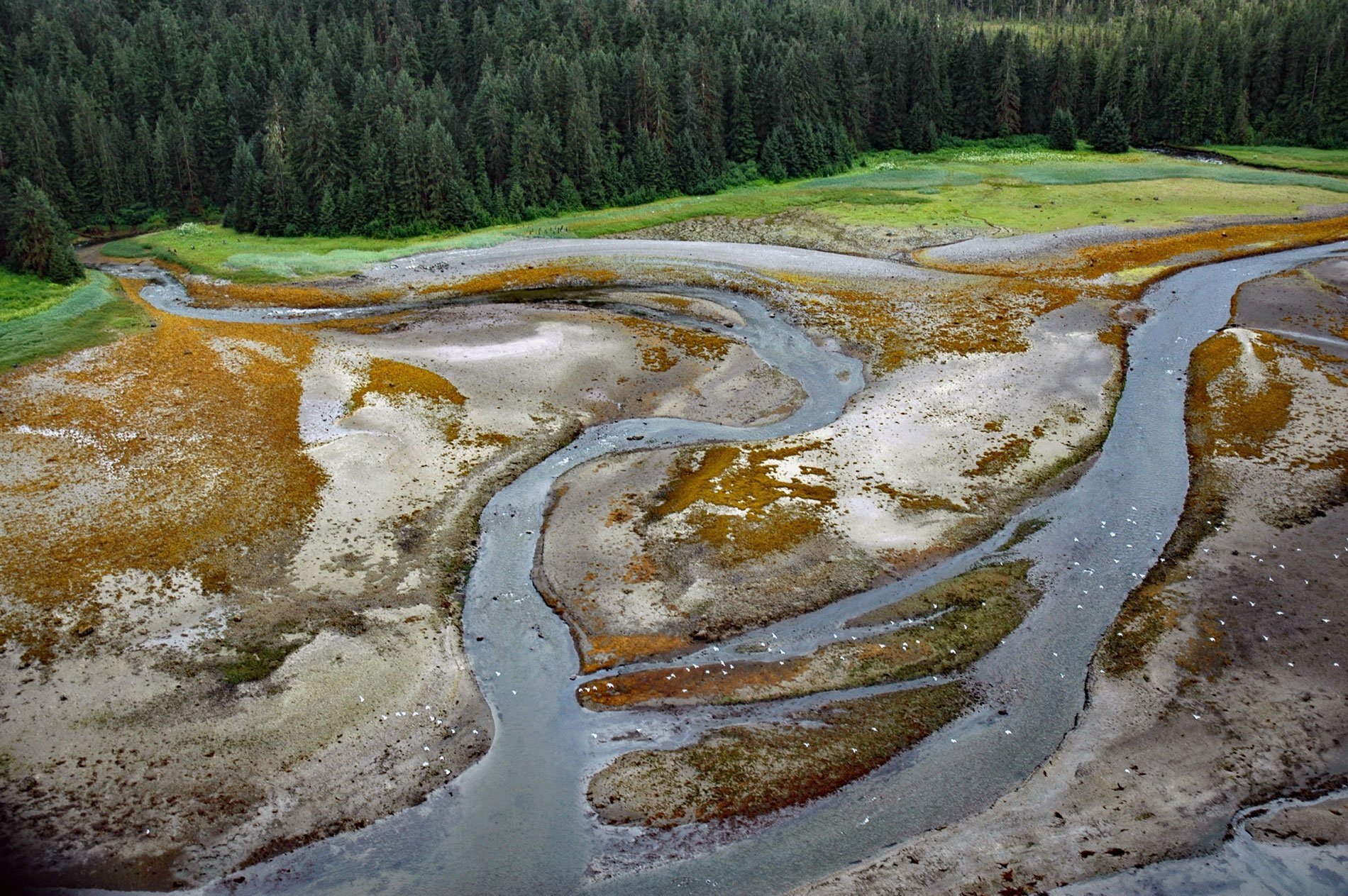Sumdum is a historical mine and community located at the head of Sanford Cove, an embayment on the southern shore of Endicott Arm, about 64 miles (103 km) north-northwest of Petersburg and 55 miles (89 km) southeast of Juneau, Alaska. The mining camp had a post office from 1897 to 1942 that was named after the Sumdum Glacier situated 7 miles (11 km) north and across Endicott Arm. The name is from the Tlingit word and reputedly refers to the booming sound of ice breaking off from the glacier. The name was first published in 1892 by the U.S. Coast and Geodetic Survey as ‘Soundon’. Endicott Arm is a deep and narrow fjord within the Tracy Arm-Fords Terror Wilderness, designated by the U.S. Congress in 1990, and includes 653,179 acres (264,332 ha). During the last glacial period, the fjord was filled by the Brown Glacier, North Dawes Glacier, and Dawes Glacier. Today, only Dawes Glacier remains tidal and contributes a substantial amount of floating ice to the fjord from the calving ice face.
The Sumdum mines are situated in the Sumdum Glacier mineral belt that extends for about 32 miles (52 km) along the southwest side of the Coast plutonic complex. The complex is a large geological feature of the Earth’s crust extending almost unbroken for about 1,100 miles (1,770 km) from the south near the British Columbia-Washington border to the Yukon Territory in the north and ranges in width from about 60 to 120 miles (100 km to 200 km (60-120 mi). The mineral belt is part of the larger Juneau Gold Belt which is thought to have been formed by fluids generated during the Cretaceous period by metamorphism resulting from the emplacement of the Coast Range Batholith. The Coast plutonic complex is an area divided by a tonalite sill of Cretaceous or Tertiary age that trends north-northwest. The main part of the complex lies to the northeast of the sill and consists of highly deformed gneiss, marble, and some schist. Near the International Boundary with Canada, the rocks have been intruded by a series of granodiorite plutons of Tertiary age. To the southwest of the sill, metamorphic rocks are locally intruded by granitic and other igneous rocks. Immediately adjacent to the sill are highly deformed gneiss, schist, quartzite, and calc-silicate rocks. The Sumdum Glacier mineral belt is largely within these rocks.
One significant deposit in the Sumdum Glacier mineral belt consisted of the gold-bearing quartz veins of the Sumdum Chief gold mine. Before 1905, it produced about 24,000 oz (680 kg) of gold from ore with about 0.4 oz (13.6 g) of gold per ton of ore and about the same amount of silver. The mine portal is about 1.8 miles (3 km) south-southeast of the abandoned town of Sumdum on Sanford Cove. The Sumdum Mine was discovered in 1889 and consisted of two veins, the Bald Eagle and the Sumdum Chief. Originally these were separate properties but were consolidated into a single mine in 1899. Most of the mining took place from 1895 to 1903 when the ore bodies were exhausted and diamond drilling was unsuccessful in finding additional ore. The veins were mined from a tunnel 3,500 feet (1067 m) long. From 1895 to 1903, the mine produced 24,000 ounces (680 kg). The mill contained 10 stamps and when running at full capacity, 40 tons of rock were milled per day at a cost of 30 cents per ton. A pipe 12,000 feet (3,658 m) in length brought water to two Pelton wheels that generated 170 horsepower. A wagon road from the mill together with an aerial tramway to the wharf was used to transport the concentrates. Read more here and here. Explore more of Sumdum here:

